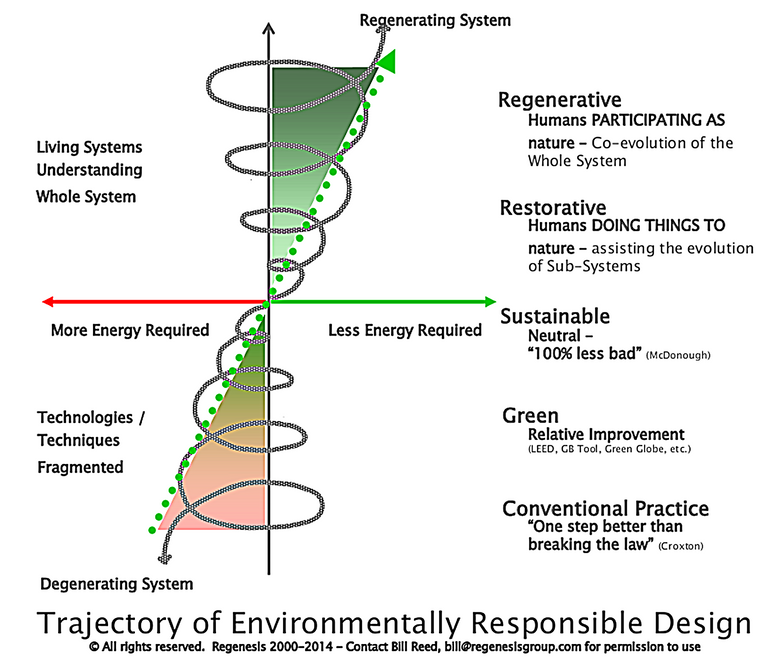The structure of most businesses have a very linear process in how things are managed; extract-manufacture-use-toss. This way of business constantly depletes our resources, takes more energy, produces more waste, and more C02 emissions than a cyclical regenerative business model, one which all products must be made from materials which are grown locally, then processed, then manufactured, then sold, and all wastes from any process in between are recycled back into the system. All pollutants/byproducts become resources when properly managed.
Regenerative Management
In order to understand how a system becomes self managing we must look to the natural systems of this planet because they are the greatest examples of the most efficient, diverse, and self managing systems there are.
Take for example a tree in the forest; Rain falls, the tree absorbs water and nutrients from the air and the soil to grow leaves, which fall off and decompose, releasing nutrients into the soil for the plant to reabsorb. This is just one example of a cyclical system which produces zero waste.
In order to analyse the benefits and uses of a certain product or element within a system we must look into its inputs/needs, outputs/resources, and intrinsic characteristics. These facts will define its specific placement within a system to ensure that it is being fully utilized to its maximum functionality while ensuring that its producing zero waste.
Looking at these natural systems and how they function we must learn to apply them to our business strategies in order to improve our performance, functionality, and benefit to the land and people, ie. Regenerative Business Model. In this model the ethics are based on permaculture; a design science which creates systems that work in symbiosis with everything in its environment, benefitting life in all its forms. These 3 ethics are; earth care, people care, and fair share. Within fair share all surplus that is created is recycled back into the system or donated out to the community.
In this model the cost of operation and the energy put into the system gets exponentially smaller and smaller because what you previously put in is still being recycled back through and there are no wastes because the byproducts are being used as a resource for another element within the system or being donated to an exterior system which benefits from it.
Let's take a restaurant for example; The restaurant buys produce from a local farm, the produce gets processed into food and the unused food get put into a compost that goes back to the farm which discounts their next purchase on a weight basis, the seeds from the produce are dried and given back to the farm which again farther offsets the cost of goods, and as the system becomes more mature it becomes more efficient and exponentially decreases the cost of goods sold, which increases profits and reduces overall waste creating a cyclical, regenerative system, rather than the traditionally wasteful linear systems most commonly used throughout society today.
If you want to learn more about regenerative business and how to manage one then read The Regenerative Business by Carol Sanford, its an excellent read and will be very productive for any entrepreneur looking to start a business!!
Please upvote and follow me if you liked the article, I will be posting much more on permaculture related subjects and anything that will uplift and bring out the best in people!!
May the abundance be with you so you can truly live your bliss!!